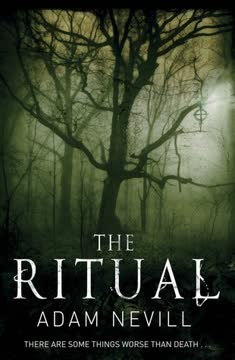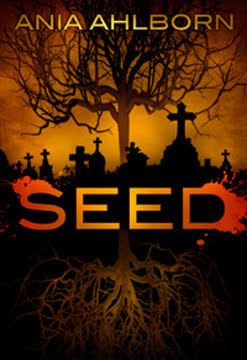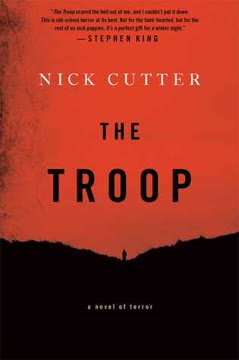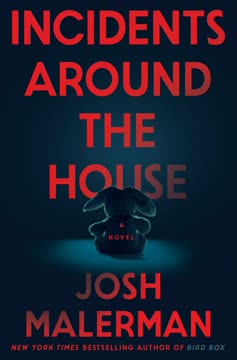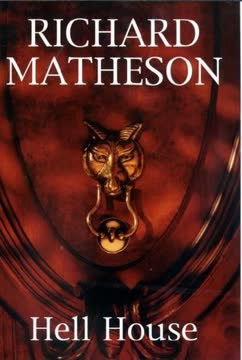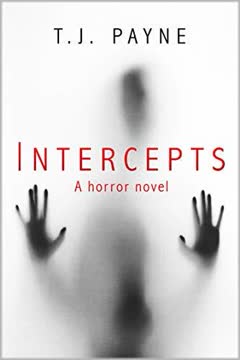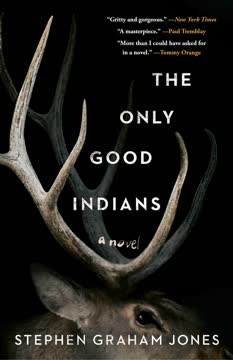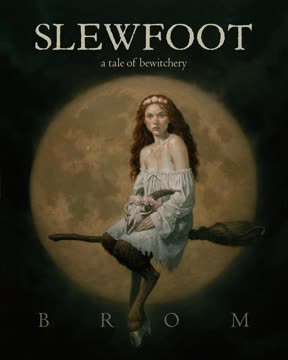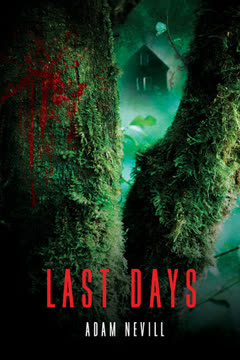Plot Summary
Reunion in the Rain
Luke, Hutch, Phil, and Dom, old university friends, gather in northern Sweden for a hiking trip meant to rekindle their bond. The reunion is strained from the start: rain pours relentlessly, and the physical and emotional distance between them is palpable. Dom and Phil struggle with the terrain, while Luke and Hutch, fitter and more experienced, grow frustrated. The group's banter is laced with old resentments and new insecurities, hinting at deeper fractures beneath the surface. The landscape is vast and indifferent, mirroring the friends' sense of isolation from each other and the world they left behind. The trip, intended as a healing adventure, instead exposes the cracks in their relationships and sets the stage for the ordeal to come.
Shortcut to Nowhere
As exhaustion and injury mount, Hutch proposes a shortcut through an unmarked, ancient forest to save time and spare Dom and Phil further pain. Despite Luke's unease, the group agrees, trusting Hutch's confidence. The forest is dense, pathless, and quickly disorienting. The shortcut, meant to be a mercy, becomes a trap. The men's sense of direction falters, and the forest seems to close in, leading them deeper into confusion and fear. The decision marks a turning point: the group's trust in each other and in their own judgment begins to erode, and the forest's oppressive presence grows, foreshadowing the horrors to come.
The Thing in the Tree
Deep in the forest, the friends stumble upon a freshly killed animal, eviscerated and hung high in a tree in a grotesque display. The sight is inexplicable and deeply disturbing, shattering any remaining sense of safety. Theories—bear, hunter, ritual—are nervously exchanged, but none satisfy. The forest, already alien, now feels actively hostile. The men's nerves fray; laughter and bravado give way to silence and suspicion. The dead thing in the tree is a warning, a symbol of the unnatural forces at work, and the group's collective fear begins to take root, infecting their every thought and action.
Lost in the Black Wood
The forest becomes a labyrinth, its darkness and density overwhelming. The men's attempts to navigate only lead them in circles, and exhaustion deepens their despair. The environment is physically punishing—scratches, falls, and soaked clothing add to their misery. The group's unity falters as blame and resentment surface. The forest seems to manipulate their path, leading them away from escape and toward something unknown. The sense of being watched grows, and the men's fear becomes tinged with paranoia. The forest is no longer just a setting but an active, malevolent force, eroding their hope and sanity.
Shelter of Skulls
As night falls and the rain intensifies, the group discovers an abandoned, decaying house deep in the woods. Desperate for shelter, they break in, despite Luke's misgivings. Inside, they find walls adorned with animal skulls and crude crucifixes, evidence of strange rituals and a history of madness. The house is cold, damp, and filled with an oppressive sense of dread. The men's exhaustion and fear are momentarily eased by the fire they build, but the house's atmosphere only deepens their unease. The shelter is a trap, a place where the boundaries between reality and nightmare begin to blur.
Nightmares and Old Wounds
As the men try to rest, they are plagued by vivid, terrifying dreams of being hunted and sacrificed. The house seems to amplify their fears, dredging up old wounds and resentments. Luke, in particular, feels isolated, haunted by memories of lost friendships and personal failures. The group's camaraderie is further strained by arguments and confessions, as the stress of their situation exposes deep-seated insecurities. The line between dream and reality grows thin, and the men awaken to find themselves physically and emotionally shaken, their sense of self and safety eroded by the night's terrors.
The Effigy in the Attic
Investigating the house, Luke and Hutch discover a grotesque effigy in the attic: a horned, goat-like figure stitched together from animal and human parts, enthroned above a bed of bones and runic carvings. The sight is both horrifying and inexplicable, evidence of ancient, pagan worship and unspeakable acts. The effigy's presence confirms their worst fears—that the forest and its history are steeped in violence and ritual. The men's rational explanations collapse, replaced by a primal terror. The effigy is a symbol of the forest's true nature: a place where old gods and old madness still reign.
Fractures and Confessions
The group's unity shatters as exhaustion, fear, and hunger take their toll. Old grievances erupt into open conflict—Luke and Dom come to blows, and Phil withdraws into silence. Confessions of personal failures, broken marriages, and lost dreams spill out, exposing the vulnerability beneath their bravado. The men are forced to confront not only the external threat of the forest but also the internal demons that have haunted them for years. The house, with its oppressive atmosphere and evidence of past horrors, becomes a crucible, burning away the last remnants of their friendship and leaving only raw, desperate individuals.
The Forest's Madness
The men awaken to find themselves scattered, traumatized, and half-naked, victims of shared nightmares and inexplicable events. The forest outside is unchanged, but their perception of it is warped by fear and exhaustion. Phil is found cowering, Dom is nearly catatonic, and Hutch is shaken to his core. The group's attempts to escape are thwarted by the forest's impenetrable undergrowth and the sense of being herded by an unseen force. The men's grip on reality weakens, and the forest's madness infects their thoughts, driving them toward the edge of collapse.
The Church of Bones
Following a faint trail, the group stumbles upon a derelict church surrounded by ancient burial mounds and rune stones. Inside, they discover a crypt filled with human and animal remains, evidence of mass sacrifice and violence. The church, built atop older pagan sites, is a nexus of the forest's dark history. The men's horror deepens as they realize the scale and antiquity of the evil they face. The discovery shatters any remaining hope of rational explanation or rescue—the forest is a place of old gods and old crimes, and they are its latest victims.
The Circle of Runes
The men attempt to find a way out, but the forest's geography is confounding. They discover a circle of rune-marked trees, evidence of ancient rituals and boundaries meant to contain or appease the forest's power. The runes are a warning and a prison, marking the limits of human influence and the domain of something older. The men's attempts to break free are futile; the forest seems to anticipate and counter their every move. The sense of being trapped—physically, psychologically, and spiritually—becomes overwhelming, and the men's desperation grows.
Fights and Fractures
Starvation, injury, and fear push the men to their limits. Arguments escalate into physical violence—Luke and Dom's fight leaves both bloodied and broken, and Phil is further traumatized. The group's cohesion is destroyed, replaced by mutual suspicion and resentment. The men are reduced to their most basic instincts, fighting for survival in a world that no longer makes sense. The forest, indifferent and eternal, watches as they turn on each other, their humanity stripped away by hunger, exhaustion, and terror. The violence among them mirrors the violence of the forest itself.
The Night Visitor
As night falls, the men are visited by something inhuman—an unseen presence that circles their camp, howling and crashing through the trees. Their torches reveal only fleeting glimpses of movement, but the sense of being hunted is overwhelming. The men's fear becomes animalistic, and sleep is impossible. The presence is both physical and psychological, a manifestation of the forest's ancient power. The men realize that they are not alone, and that whatever stalks them is intelligent, patient, and utterly merciless. The night is a crucible, burning away hope and leaving only terror.
Dreams of the Hunt
The men's sleep is haunted by visions of pursuit, sacrifice, and transformation. They dream of being hunted, of becoming prey, of being offered up to something vast and indifferent. The dreams are shared, their details overlapping and reinforcing the sense of a collective fate. The boundaries between dream and waking life dissolve, and the men awaken disoriented, their memories unreliable. The forest's influence is total, eroding their sense of self and reality. The dreams are both a warning and a prophecy, foreshadowing the violence and loss to come.
The First to Fall
As they attempt to escape, the men are attacked by the unseen presence. Hutch is the first to be taken—dragged from his tent in the night, his screams echoing through the forest. The others find only blood and signs of a struggle. Panic and despair set in; the group is now three, and the sense of doom is inescapable. The men realize that they are being hunted, not by chance but by design. The forest is a predator, and they are its prey. The loss of Hutch, their leader and guide, leaves them directionless and broken.
The Hanging Tree
The survivors discover Hutch's mutilated body, hung high in a tree in a grotesque parody of the earlier animal carcass. The display is a message, a demonstration of power and intent. The men are traumatized, their hope extinguished. The forest's violence is no longer abstract or symbolic—it is immediate, personal, and overwhelming. The men's attempts to fight back are futile; they are outmatched and outwitted at every turn. The hanging tree is a symbol of their fate, a warning that none will escape.
The Last Escape
With food and water gone, injuries mounting, and the forest closing in, the last survivors—Luke, Dom, and Phil—make a final, desperate attempt to escape. Their journey is a nightmare of exhaustion, pain, and terror. The forest seems endless, and every step is haunted by the sense of pursuit. One by one, the men are picked off—Phil is taken, then Dom, leaving Luke alone. The forest's victory is total; the men's struggle is revealed as futile, their deaths inevitable. Luke's flight is both a physical and spiritual ordeal, stripping him down to his most basic instincts.
Blood Frenzy
Luke is captured by a trio of black metal-obsessed youths—Loki, Fenris, and Surtr—who have come to the forest seeking the old gods and the power of sacrifice. They imprison Luke in a decaying farmhouse, subjecting him to humiliation, violence, and psychological torment. The youths are both ridiculous and terrifying, their adolescent posturing masking a capacity for real cruelty. They see Luke as a means to an end—a sacrifice to the forest's ancient power. The dynamic shifts from supernatural horror to human evil, as Luke becomes a pawn in their ritual.
The Old Woman's House
The farmhouse is presided over by an ancient, enigmatic woman, the old woman, the last of the old line who once worshipped the forest's god. She is both caretaker and jailer, complicit in the youths' plans but also bound by her own traditions. The house is a museum of death—attics filled with mummified ancestors, relics of ancient rituals, and the lingering presence of the old god. The old woman's motives are inscrutable; she is both a victim and an agent of the forest's will. Luke's fate is now tied to hers, and to the ancient cycle of sacrifice and renewal.
Sacrifice and Survival
As the black metal youths prepare their ritual, the old woman intervenes, freeing Luke and arming him. In a desperate, bloody struggle, Luke kills his captors and the old woman, ending the line of worshippers. But the forest's god is not so easily denied—wounded and enraged, it pursues Luke as he flees in a stolen truck. The final chase is a nightmare of violence and terror, culminating in a brutal confrontation. Luke survives, but only just—stripped of everything, traumatized, and forever changed. The forest is left behind, but its scars remain, a reminder of the ancient, indifferent powers that still haunt the world.
Characters
Luke
Luke is the novel's protagonist, a man adrift in his own life—single, underemployed, and estranged from his old friends. He is physically fit but emotionally isolated, carrying deep-seated anger and resentment. The trip is meant to reconnect him with his past, but instead exposes his sense of failure and exclusion. As the ordeal unfolds, Luke's survival instincts come to the fore; he is resourceful, determined, and capable of violence when pushed. His psychological journey is one of stripping away illusions—about friendship, self-worth, and the nature of evil. By the end, Luke is both traumatized and transformed, his survival a testament to both his resilience and the cost of confronting the darkness within and without.
Hutch
Hutch is the group's de facto leader—experienced, confident, and eager to keep the peace. He is physically capable and emotionally steady, often mediating between the others. Hutch's optimism is both a strength and a flaw; his decision to take the shortcut is well-intentioned but disastrous. As the situation deteriorates, Hutch's composure falters, revealing his own fears and regrets. His eventual death is both a personal tragedy and a symbol of the group's collapse—without him, the others are lost, both literally and figuratively. Hutch's fate underscores the novel's themes of leadership, responsibility, and the limits of human agency in the face of ancient, indifferent forces.
Dom
Dom is the group's loudest and most abrasive member, quick with sarcasm and criticism. Overweight and nursing a bad knee, he is physically the weakest, and his vulnerability fuels his defensiveness. Dom's relationship with Luke is fraught—old resentments and new insecurities erupt into violence. Beneath his bluster, Dom is deeply wounded by personal failures—his marriage is collapsing, and he feels trapped by responsibility. Dom's journey is one of humiliation and suffering, but also of unexpected moments of honesty and connection. His death is brutal, but his final moments with Luke are marked by a hard-won reconciliation, a testament to the complexity of their friendship.
Phil
Phil is the quietest and most fragile of the group, physically unprepared for the hike and emotionally battered by his failing marriage and financial troubles. He is often the butt of jokes, and his passivity masks deep pain. Phil's psychological unraveling is the most pronounced—he is haunted by nightmares, paralyzed by fear, and ultimately reduced to a state of childlike terror. His death is both pitiful and horrifying, a symbol of the group's collective failure to protect its weakest member. Phil's fate underscores the novel's themes of vulnerability, alienation, and the cost of survival.
Loki
Loki is the leader of the black metal trio, a tall, imposing figure with a messianic complex. He is articulate, manipulative, and deeply invested in the mythology of Norse paganism and black metal rebellion. Loki's charisma masks a profound emptiness and a capacity for violence. He sees himself as an agent of destiny, orchestrating rituals and sacrifices to summon the old god. Loki's relationship with Luke is complex—he admires Luke's resilience but is ultimately ruthless. His death is both a personal defeat and the collapse of his delusional project, a reminder of the dangers of fanaticism and the allure of nihilism.
Fenris
Fenris is Loki's right-hand man, a volatile and sadistic youth obsessed with violence and transgression. He is impulsive, cruel, and eager to prove himself through acts of brutality. Fenris's relationship with Loki is one of dependency and rivalry; he craves approval but resents his subordinate status. His interactions with Luke are marked by taunting, threats, and eventual violence. Fenris's death is both a consequence of his own aggression and a moment of grim catharsis for Luke, who is forced to embrace violence to survive. Fenris embodies the novel's themes of adolescent rage, alienation, and the seductive power of evil.
Surtr
Surtr is the third member of the black metal trio, a young woman marked by emotional instability and a penchant for cruelty. She is both victim and perpetrator, her violence fueled by past trauma and a desperate need for belonging. Surtr's relationship with the others is fraught—she is both an object of desire and a source of tension. Her interactions with Luke are particularly vicious, culminating in a brutal confrontation. Surtr's death is both a release and a punishment, a symbol of the self-destructive nature of the group's project. She represents the novel's exploration of gender, power, and the consequences of unchecked rage.
The Old Woman
The old woman is the last of the forest's original worshippers, a figure both pitiable and terrifying. She is the caretaker of the house, the mummified ancestors in the attic, and the rituals that bind the forest's god. Her motives are inscrutable—she is complicit in the violence but also bound by tradition and necessity. The old woman's relationship with Luke is complex; she both aids and betrays him, using him to rid her home of the black metal youths before offering him as a final sacrifice. She embodies the novel's themes of tradition, complicity, and the persistence of the past.
Moder (The Black Goat)
Moder is the novel's true antagonist—a primordial, godlike entity that haunts the forest and demands sacrifice. It is both animal and myth, a manifestation of the land's ancient violence and indifference. Moder is never fully seen or understood, its presence felt through dreams, omens, and acts of unspeakable brutality. It is both a symbol of nature's power and a reminder of humanity's insignificance. Moder's influence warps the minds and fates of all who enter its domain, reducing them to prey or worshippers. It is the embodiment of the novel's central horror: the persistence of the old gods and the futility of human resistance.
The Forest
The forest is more than a setting—it is an active, malevolent force that shapes the narrative and the fates of the characters. It is ancient, pathless, and indifferent, a place where human rules and logic do not apply. The forest manipulates, confounds, and ultimately destroys those who enter it, serving as both a physical and psychological antagonist. Its power is both supernatural and symbolic, representing the persistence of the past, the limits of human understanding, and the inevitability of death. The forest is the novel's most enduring character, a reminder that some places are not meant for men.
Plot Devices
The Forest as Labyrinth and Predator
The novel's central plot device is the forest itself—a labyrinthine, sentient environment that confounds, isolates, and ultimately destroys the protagonists. The forest's geography is mutable and deceptive, leading the men in circles and thwarting their every attempt at escape. It is both a physical and psychological trap, amplifying their fears, resentments, and insecurities. The forest's malevolence is both supernatural and symbolic, representing the persistence of ancient evil and the futility of human resistance. The use of the forest as both setting and antagonist is reinforced by foreshadowing (the animal in the tree, the effigy in the attic, the runes and bones) and by the gradual erosion of the characters' sanity and hope.
Ritual and Sacrifice
The novel is structured around the theme of ritual—both the failed rituals of friendship and the ancient, violent rites of the forest's original inhabitants. The discovery of the effigy, the church of bones, and the circle of runes all foreshadow the ultimate purpose of the forest: the demand for sacrifice. The black metal youths' attempt to revive these rituals is both a parody and a continuation of the forest's ancient violence. The plot is driven by the inexorable logic of sacrifice—each character is offered up, one by one, to the forest's god, and even acts of resistance are ultimately subsumed by the cyclical structure of violence and renewal.
Psychological Horror and Unreliable Perception
The novel employs psychological horror as a primary device—dreams, hallucinations, and shared nightmares blur the line between reality and imagination. The characters' perceptions are unreliable, distorted by exhaustion, fear, and the forest's influence. The use of dreams and visions foreshadows future events and reveals the characters' deepest fears and desires. The erosion of sanity is both a consequence of the forest's power and a metaphor for the breakdown of friendship, identity, and meaning. The reader is left uncertain of what is real, mirroring the characters' own disorientation and terror.
Human Evil as Mirror to the Supernatural
The introduction of the black metal youths as human antagonists serves to mirror and amplify the supernatural horror of the forest. Their violence, cruelty, and nihilism are both a product of and a response to the forest's ancient evil. The cult's rituals and ideology are a parody of the forest's true power, and their fate is a warning about the dangers of fanaticism and the allure of transgression. The interplay between human and supernatural evil blurs the boundaries between victim and perpetrator, complicating the novel's moral landscape and deepening its horror.
Cyclical Structure and Inevitability
The novel's structure is cyclical—beginning and ending with the promise of reunion and the reality of loss. The characters' journey is both a literal and metaphorical descent into the past, into the heart of darkness, and into the inevitability of death. The use of foreshadowing, repetition, and ritual reinforces the sense of fate and inevitability. The story's conclusion offers no easy resolution or redemption—only survival, trauma, and the knowledge that the old gods and old evils persist, waiting for the next sacrifice.
Analysis
Adam Nevill's The Ritual is a harrowing exploration of the persistence of ancient evil and the fragility of modern identity. At its core, the novel is about the failure of friendship and the limits of human agency in the face of forces—both psychological and supernatural—that are older and more powerful than the self. The forest is not just a setting but a character, a labyrinthine predator that strips away the illusions of civilization and exposes the raw, animal core of its victims. The introduction of the black metal cult serves as a mirror to the supernatural horror, highlighting the dangers of nihilism, alienation, and the seductive power of violence. The novel's use of ritual, sacrifice, and cyclical structure reinforces the sense of inevitability and doom—no matter how the characters struggle, they are ultimately subsumed by the ancient logic of the forest. The Ritual is a meditation on the persistence of the past, the limits of reason, and the cost of survival. Its lesson is bleak but profound: some places, and some evils, cannot be escaped—they can only be endured, and their scars carried forever.
Last updated:
Review Summary
The Ritual received mixed reviews, with many praising its atmospheric horror and creepy forest setting. Readers enjoyed the first half's tense survival story but were divided on the second half's shift in tone. Some found the characters unlikeable and the writing repetitive. However, many appreciated Nevill's descriptive prose and ability to create a sense of dread. The book's exploration of friendship dynamics and ancient folklore also resonated with readers. Overall, it was considered a solid horror novel that evoked strong reactions.
Similar Books
Download PDF
Download EPUB
.epub digital book format is ideal for reading ebooks on phones, tablets, and e-readers.
